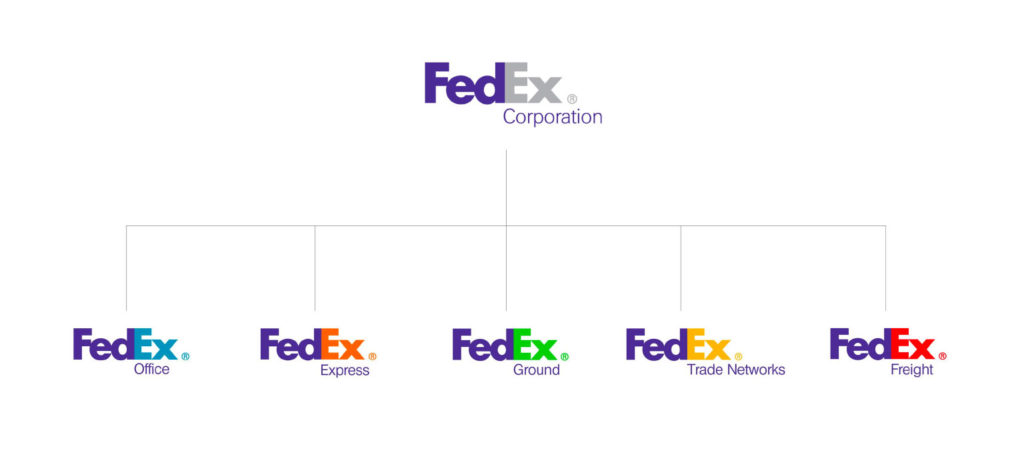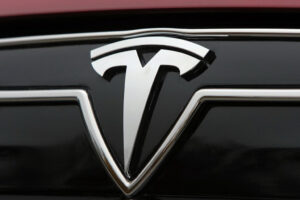Understanding, choosing, and implementing a Brand Architecture for your company is one of those hard things you have to do to make every other thing easier. And yes, creating and managing a brand architecture is very hard (and that is why we wrote this article.)
Creating and managing a brand isn’t difficult because it involves creating something convoluted, but because it involves simplifying something very complex.
What is Brand Architecture?
In simple terms, it is about what and how a company chooses to brand itself – how they chose to organize and present themselves. Brand Architecture refers to the way a company organizes its teams, divisions, products, services, and subsidiaries. It is the way a company chose to execute its brand strategy.
And while this sounds simple on the surface, it can drive one batty – especially when the organization is blitz-scaling. or already big. But this doesn’t mean a small business should ignore brand architecture, no. Brand architecture is essentially the “engine fine-tuning” of a business, and the earlier you get it right, the better for everyone.
This is because, brand architecture doesn’t just streamline work within the organizations, but it also brings about other advantages
Advantages Of Brand Architecture
Having a good brand architecture…
- Helps customers understand and enjoy patronizing the business. Too many subdivisions and offerings can confuse the customers and drastically reduce sales
- Short-circuits unhealthy competition within sectors of the same company (hence eliminating effort duplication)
- Boosts employee’s productivity since their tasks are streamlined
- Make recruitment of talents much more intentional, purposeful and easier (both for the company and the talent being recruited)
- Increases revenue through cross-selling
- Grows brand awareness through cross-promotion
- Reassures investors, and partners (as they can easily understand where their investments are going into)
- Gives the media the correct perception of the organization
- Optimizes the company’s equity and portfolio (which can be good for getting funding’s and other evaluations)
- Helps the company to focus (on specific goods and services), thereby bringing clarity
- Encourages Kaizen
- Differentiates the company from its competitors – which reduces competition as well
- Brings about faster growth
- Outlines the company’s goals and values, which also aids in crafting a clear message
- And most importantly, drastically reduces the cost of running the company (as money is put into only the right things, in the right way).
Creating a Brand Architecture sounds like the “magic fairy dust” that makes all your company’s dreams come through, and that’s because it is. There is no successful organization that hasn’t taken the time to organize its affairs. In fact, the cliché goes “People don’t fail, systems do”.
As pointed out earlier, “simplicity” is the key. However, this doesn’t mean you have to shed off important parts of the company, no. What it means is that you need to create synergy between them.
Read Also:
You must approach Brand Architecture the way you approach the task of building a “house of cards”. Everything needs to be considered, yet put in the right place. And, just like a house of cards, if you remove one aspect the whole deck would come crashing down.
What this means is that you also need to be comprehensive when simplifying things. It shouldn’t be so simple that it loses its value and effectiveness. If you want a car to go faster, you would want to reduce the weight, but that doesn’t mean you should remove the engines or tires. You just have to optimize them.
That said, below are the basic architectures your company can adopt;
Types Of Brand Architectures
A lot of factors come to play when picking a brand architecture to adopt (and would be discussed in the next section of this post), but below are the fundamental brand architectures a company can adopt:
- Monolithic (Branded House)
- Pluralistic (House of Brands)
- Endorsed
- Hybrid
Monolithic
The monolithic or Branded house architecture involves organizing several divisions, features, offers, and brands under a single Master brand. This means every sector of the company (no matter how distinguished) serves to promote a single name – the master brand.

FedEx Brands — Monolithic (or House of Brands)
The advantage of this brand architecture is that it
- Inspires customer loyalty: As they come to enjoy a wide gamut of goods and services under one roof
- Reduces the cost of marketing: Since all efforts and resource are put into promoting a single brand, and
- Improves brand equity
Examples of prominent companies which employ this architecture include;
- FedEx: FedEx Express, FedEx Freight, FedEx Services, etcetera.
- Virgin: Virgin Mobile, Virgin Records, Virgin Media
- GE: GE Capital, GE Healthcare, General Electric, etcetera.
Pluralistic
The Pluralistic or House of Brands architecture is a form of decentralized system where each division functions independently though “owned” by one brand.
By nature, this architecture is more complicated, costly, and harder to run. The major benefits this form of brand architecture has is that
- It helps companies/brands that are not compatible (based on their offerings) to still unite, and
- It helps individual brands focus (and niche down) on a particular market (without being distracted)

Coca Cola Brands Pluralistic Brands (or House of Brands)
Subscribe for updates
Some brands which employ this architecture include
- Coca-Cola: Coke, Sprite, Powerade, Fanta, etc.
- Unilever: Dove, Ben & Jerry’s, Lipton
- Procter & Gamble: Tide, Gillette, Old Spice
Endorsed
Similar to the pluralistic architecture, individual brands still maintain their identity but are (as the name suggests) endorsed by a parent brand. Unlike the pluralistic architecture, the parent brand may choose to remain anonymous – and only known by investors.
The benefit of this architecture is that
- Subdivisions can benefit from the equity of the parent brand
- The credibility of the main brand is also transferred to the newer subdivisions
Examples of companies that employ this model include
- Apple: Shazam, Siri, iPhone, Mac
- Facebook: Instagram, WhatsApp, Oculus
- Nestle: Cheerios, Nesquik, KitKat
Hybrid
Consider this a brand architecture “chimera”. It is a combination of several brand architectures into one mega-brand architecture. It could be any combination of the Monolithic, Pluralistic, and Endorsed brands.
This is the most complex form of brand architecture to adopt. It is usually adopted by organizations that have grown very large (either by expansion, mergers, or acquisitions).

Amazon Hybrid Brand Architecture
The major advantages of this architecture are;
- It allows the brand to grow very fast and wide (dominating several markets), and
- Allows the coexistence of new, old, and diverse products.
Some popular brands that have been able to pull off this form of brand architecture include
- Alphabet: Google (YouTube, Gmail, Drive, Hangout, etcetera), Waymo, Android, etcetera
- Amazon: Amazon Echo, Amazon Kindle, Amazon AWS, Prime Video, Audible. etcetera
- Microsoft: Xbox, Skype, Microsoft Windows, etcetera.
Now that you know the buffet of choices available to you, the next step is to get pragmatic.
Key Steps To Creating Your Brand Architecture
As your company grows and expands (especially when it acquires other products, or merge with other companies) the cost of creating, branding, marketing, and legal implications multiply almost exponentially. This is why creating a robust Brand Architecture to handle this shock, and even transform the colossal nature of the brand into a juggernaut, is crucial.
When creating or deciding on a Brand Architecture to adopt, you should first consider
- Your long term goals
- Your chances of winning with the strategy
- The possibility of it increasing your profits, and
- The amount of leverage it (the Brand Architecture) gives you
After which you can then take these 3 major steps to start creating the chosen architecture:
- Research,
- Strategy, and
- Migration
1. Research:
Before you start building anything, you need to first understand what the customers want. You need to find out how they perceive your brand – how aware and loyal they are. You also need to know what offer of yours they are most interested in. This would help you know what to focus on – improve or add.
This phase includes qualitative research, quantitative research, brand equity studies, and audits. No stone should be left unturned. The company needs to thoroughly understand
- How the different sections within the organization are interacting with each other (i.e. consider your brand’s strengths and weaknesses)
- The nature of the brand’s portfolio
- How they are currently serving the customers
- Customers’ opinions and perceptions of its services/goods (i.e. consider how and where you can improve)
- What the customers wish for (i.e. find out what your organization can add)
- What its competitors are doing better
- And so on.
This phase involves carrying out surveys and calling for meetings to discuss with all subsidiaries. It is perhaps the most important phase of creating the brand architecture. And, depending on the size and nature of the company, this task can be easy or gruelling – but is worth being clinical about nonetheless.
2. Strategy:
After having a thorough understanding of the market’s needs, and the company’s strengths, you can then go on to decide what architecture would give you the most leverage (based on what you have and want to achieve.)
This phase involves deciding how the brands and offerings should be presented, how much they are to be cross-referenced, promoted, or kept independent.
This phase also requires making decisions on how the resources (money, manpower, connections, etcetera) are to be spent.
Once these decisions are made, the next phase is initiated…
3. Migration:
This is the part where you name and assign responsibilities to the sub-brands. For this to work out, all divisions/subsidiaries need to agree with the decision made so as to create synergy. In essence, this is when you develop, announce, and implement the blueprint for the organization
This blueprint clearly states…
- The role of each subsidiary (brand, or sub-brand)
- The market of each brand (demographics, and offers)
- The nature of affiliation with the master brand
- The positioning and presentation of each brand, and
- A clear system, and hierarchy – for making decisions – within the organization
With all these in place – fully supported and understood by all – the agreed-upon architecture can be implemented right away.
But the job doesn’t end there…
How to manage Brand Architecture
Once the brand architecture has been decided and implemented, the next task to be carried out is the management of that framework.
The task is a continuous and dynamic one, hence, it cannot be summarized. However, there are a few general things that must be kept in constant check, else the whole Brand Architecture would crumble. They are…
- The Rules: The demands, boundaries, rights, and limits of each subsidiary must be clearly stated and communicated. This information should also be dispensed to each employee and third parties.
- The Workflow: The responsibilities of each part of the company should be clearly stated. This would allow for more productivity, collaboration, and fewer issues or effort duplication. Each part of the architecture must be able to play its part irrespective and independent of the other.
- The Assets: The brand assets should be properly used, taken care of, and protected. This involves brand equity, recognition, and loyalty. It is also good practice to centralize the brand assets – which aids accessibility and transparency.
- The Promotion: Promotion/marketing should be a top priority for any brand because lack of visibility equals lack of existence, which translates to no sales and ultimate collapse of the structure. The promotion also helps the brand build authority and improves its relevance to the market.
- The Customers: The brand should also be sensitive to what the customers are saying about it. Your Brand Architecture should be robust yet flexible. It sounds contradictory, but it isn’t. It simply means the company should be willing to reassess their decisions based on customer reactions because they are the reason the structure exists in the first place.
- The Profitability: Finally, the company should ensure that profits are being maximized. If the new Brand Architecture is too costly to maintain, then something is terribly wrong somewhere, and you should return to the drawing boards.
The golden rule for creating a Brand Architecture is that it must make the customers more willing to buy whilst reducing the difficulty the company faces in seeing that happen. Simply put, it must drive sales up (hopefully to stratospheric heights), whilst reducing friction within your organization(s).
Are you in need of a one-on-one brand strategy/brainstorming session? Schedule a meeting by first contacting us.







